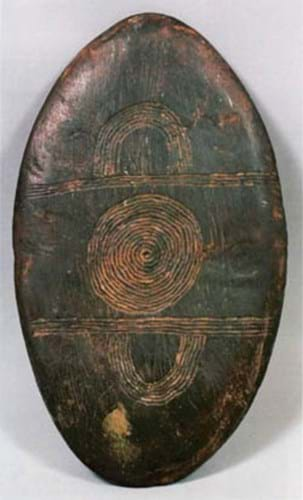
The tjurunga stone from the Arunta people of the desert region of central Australia was scheduled to be sold at Canterbury Auction Galleries on September 14 by a Kent lady who had owned it for 50 years.
Tjurunga, flat-faced ovoid objects made in stone or wood by the Arunta, Loritja, Kaitish and Unmatjera people, are totemic objects in Aboriginal culture. During the unease that followed the appearance of this example on the open market, they were likened by Bernice Murphy, the national director of Museums Australia, as "more important to Aboriginal culture than the Elgin Marbles are to Greece" because of their continuing religious associations.
To be handled only by tribal elders, they are thought to represent the bodies of totemic ancestors with powers to influence the collective fate of the clan. In ancient times they were seen by women on pain of death, and museums in Australia refuse to exhibit them out of respect for Aboriginal beliefs.
That this example was being sold by a white English woman who had received it as a birthday gift only added to the disquiet as news spread.
Canterbury Auction Galleries were shown the 10½ x 6in (26 x 15cm) stone during a routine evaluation day held in Sandwich. One face of the ovoid was carved with concentric circular and semi-circular ornament, the other with a circular panel decorated in red - the totem of the group to which it had once belonged.
Such relics have long been of interest to European anthropologists and sociologists studying the sacred nature of totemic religion. This example had been collected by Archer Russell, explorer, writer and literary editor of the Sydney Morning Herald, who was the author of various books on the Aboriginal way of life. In 1961, shortly before his death, he gave the stone and other items to the vendor, a local woman who was then living in Sydney, as a birthday gift. She had heard of a similar stone being sold in France for a large sum. Here an estimate of £4000-6000 was suggested.
Michael Cawthorn from the Museum and Art Gallery of the Northern Territory was the first to appeal to Canterbury Auction Galleries to withdraw the object from sale. "These objects do turn up from time to time on online auction sites and so on, but it's something that the museum and the Australia Research Centre considers to be very inappropriate, given the spiritual significance of these objects to Aboriginal people," he said.
As opposition spread, and Australian news crews found their way to Kent, the auction house were approached by the Australian High Commission in London. While acknowledging that the vendor had full title to sell, they were delighted when the decision was taken to withdraw it from sale.
"Obviously my vendor and I don't wish to offend anybody," said auctioneer Tony Pratt. "I've realised how important this has become."
The vendor now hopes to return the tjurunga stone to the Arunta people.
By Roland Arkell




